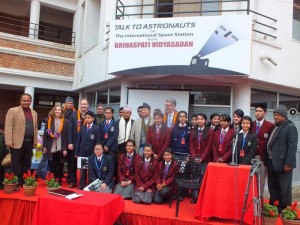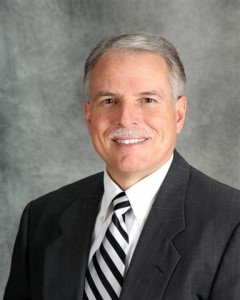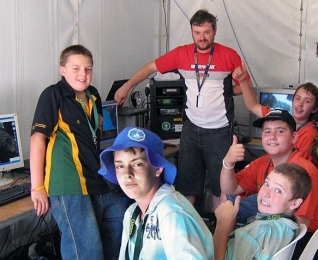 From the WIA, original post here.
From the WIA, original post here.
Date : 25 / 01 / 2016
Author : Jim Linton – VK3PC
The well-equipped station of Tony Hutchison VK5ZAI enabled students in Nepal to chat with Astronaut Tim Peake KG5BVI from England on board the International Space Station. During the earthquake in that country last year, a Brihaspati VidyaSadan High School building was used by HAM radio operators from Nepal and India to provide emergency communications.
In the Amateur Radio on the International Space Station (ARISS) event the VK5ZAI ground station had a session 17 questions and answers with the school in Kathmandu, in the nine minute pass. Tony VK5ZAI said the ARISS program that brings together orbiting astronauts and students, happened around the world. He explained that in the link-up on January 21, students asked questions about life in space, the developments and tools used by the astronauts, and of course bodily functions like sneezing and exercising.
Astronaut Tim Peake, in answer to questions about how to become an astronaut, referred to his own experience of learning to fly aircraft, then with that skill moved into training for space. Astronauts come for many different professions, with his advice being: “You need to find out what you are passionate about and what you are enjoying.” In what was the first ARISS contact for Nepal, he told the students to do what they loved, follow their dreams, get skilled, then maybe space travel is an option.
The school had run a week-long program and exhibition on space travel, and technology that included Amateur Radio. Pravin Joshi 9N1KK was among those who helped prepared the students who had a large audience of about 300. This included the British Ambassador to Nepal, the Cultural Affairs Officer from the US Embassy, ten youngsters other schools, and had considerable media coverage.




